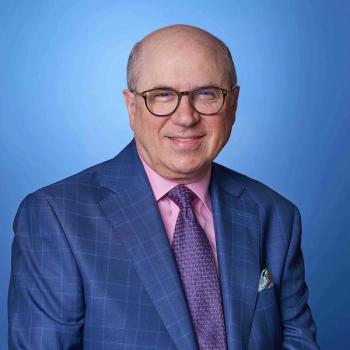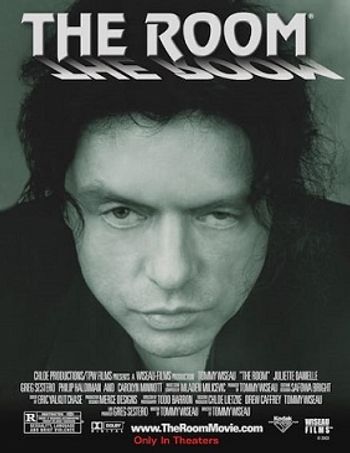
- Vol 33 No 9
- Volume 33
- Issue 9
Creativity and Mental Illness: Richard Kogan on Rachmaninoff
An important questions for clinicians is whether treatment of a psychiatric disorder will enhance or diminish creativity.
[[{"type":"media","view_mode":"media_crop","fid":"51910","attributes":{"alt":"shutterstock","class":"media-image media-image-right","id":"media_crop_9165885204721","media_crop_h":"0","media_crop_image_style":"-1","media_crop_instance":"6420","media_crop_rotate":"0","media_crop_scale_h":"125","media_crop_scale_w":"125","media_crop_w":"0","media_crop_x":"0","media_crop_y":"0","style":"float: right;","title":"Shutterstock.com","typeof":"foaf:Image"}}]]If you’ve ever been to one of the American Psychiatric Association’s annual meetings, you probably know who Richard Kogan is. If you’ve been really lucky, you have heard one of his lecture-concerts. Dr. Kogan is Clinical Professor of Psychiatry at Weill Cornell Medical College as well as Artistic Director of the Weill Cornell Music and Medicine Program. A graduate of the Juilliard School of Music, Harvard College, and Harvard Medical School, Dr. Kogan is a virtuoso concert pianist and a distinguished psychiatrist-which turns out to be in Dr. Kogan’s case a brilliant combination.
The nascence of Dr. Kogan’s lecture-concert series was a forum on creativity and mental illness presented at the APA in 2001. In preparing for the presentation, he researched the lives of composers whose music he had played his entire life and discovered that many of them had signs and symptoms of serious psychiatric illness. Beethoven, for example, had paranoid, persecutory delusions; Tchaikovsky had recurrent bouts of suicidal depression; and Schumann had panic attacks and mood swings and spent the final years of his life in an asylum.
While recognizing the inherent impossibility of confirming retrospective diagnoses on historical figures, Dr. Kogan observed that many of the great composers of the classical music pantheon were prolific letter writers and kept meticulous diaries, thereby affording a window into their mental state for nearly every day of their adult lives. Dr. Kogan has done numerous benefit performances on these composers (playing their masterpieces and explaining their psychic distress) for organizations like the National Alliance on Mental Illness in an effort to reduce the stigma associated with psychiatric illness. He notes that “it seems perverse to stigmatize a group whose members include individuals who have made such extraordinary contributions to civilization.”
The link between creative genius and mental illness has been recognized since ancient times, and modern research suggests that the incidence of psychiatric illness is greater in populations of writers, artists, and musicians than in the general population. An important question for clinicians is whether treatment of a psychiatric disorder will enhance or diminish creativity. Dr. Kogan cautions that “it is important not to over-romanticize mental illness and its impact on the creative process . . . most depressed individuals are too paralyzed to compose a symphony and most psychotic individuals are too disorganized to create anything that is coherent.”
But Dr. Kogan expressed concern that presenting programs on Schumann, Tchaikovsky, and other composers with florid psychopathology who had monumental creative accomplishment while living in an era without effective psychiatric treatment might be contributing to this tendency toward over-romanticization. Hence his current focus on the case of the great Russian composer Sergei Rachmaninoff. In recent performances including “The Psychiatrist at the Keyboard” for the BBC in London and as soloist with conductor Marin Alsop and the Baltimore Symphony in Rachmaninoff’s Piano Concerto No. 2, Dr. Kogan explored how Rachmaninoff’s most beloved music “owes its very existence to a timely intervention by a mental health professional.”
Rachmaninoff was born in 1873 and endured considerable hardship as a youngster. His father was a wealthy landowner but squandered his entire fortune through gambling, and the family was forced to move to a cramped apartment in St. Petersburg where there was a diphtheria epidemic. The 9-year-old Sergei and his older sister contracted the illness. She died and although he eventually recovered, he was left with a fear of death that lasted his entire lifetime.
Rachmaninoff was a talented young pianist but was undisciplined. At age 12 he was sent by his family to what can be likened to piano “boot camp” in Moscow, where the strict regimen of practicing scales improved his technique but increased his tendency toward despondency. As a teenager, he discovered that composing music provided an ideal outlet for expressing his internal feeling states.
As a composition student at the Moscow Conservatory, he fell under the influence of his musical idol, Pyotr Ilyich Tchaikovsky. Tchaikovsky recognized Rachmaninoff as a kindred spirit in writing emotionally charged music and effectively anointed the younger man as his successor. After Tchaikovsky’s death in 1893, Rachmaninoff was determined to live up to this legacy and began to compose a symphony. The world premiere performance of the Rachmaninoff Symphony No. 1 was a disaster-the orchestra did not rehearse sufficiently and the conductor, Alexander Glazunov, was apparently drunk during the concert. The reviews were scathing. Dr. Kogan notes that “Rachmaninoff always had a gloomy disposition, and this artistic setback precipitated a full-scale emotional crisis, plunging him into a major depressive episode that lasted 3 years.” Rachmaninoff developed insomnia and feelings of worthlessness and hopelessness, lost his appetite and, most disturbingly, his ability to compose. He recalled that he felt “like a man who had suffered a stroke and had lost the use of his head and hands.”
The London Philharmonic Society commissioned Rachmaninoff to compose a new piano concerto. Because he needed the money, he accepted the assignment, but by this point he had lost all confidence and had complete writer’s block. In desperation he sought consultation with Dr. Nikolai Dahl, who had recently cured Rachmaninoff’s aunt of an unspecified psychosomatic ailment.
After graduating from Moscow University Medical School, Dr. Dahl became intrigued by the therapeutic use of hypnosis and went to France to study with hysteria and hypnotism expert Jean-Martin Charcot. When Dr. Dahl returned to Russia, he opened a practice devoted exclusively to the use of hypnosis in treating psychiatric problems. In addition to his medical practice, Dr. Dahl was an accomplished amateur violist and founded his own string quartet. Dr. Kogan points out that “violists in string quartets are almost required to be good listeners, constantly attuned to the violin voices above and cello line below, and good listening skills are similarly invaluable in treating psychiatric patients.”
Dr. Kogan speculates that Dr. Dahl may have utilized cognitive therapy techniques in his treatment, persuading Rachmaninoff that an inadequate performance of his Symphony No. 1 did not mean that it was an unworthy piece. Rachmaninoff relied heavily on inspiration in the creative process-even large-scale works like symphonies and concertos tended to reveal themselves to him in inspired imaginative bursts. Dr. Dahl seems to have focused on subduing the automatic negative thoughts that interfered with the composer’s creative flow. In his memoirs, Rachmaninoff wrote that in every single session, after an extended conversation, Dr. Dahl would put him in a trance and then repeat the same posthypnotic suggestions over and over “. . . you will write your concerto . . . you will work with great facility . . . your concerto will be of excellent quality . . . .”
The 2 men met daily starting in January 1900, and by April of that year Rachmaninoff noted a considerable improvement in mood and appetite. He began work on what would prove to be one of the iconic works of the classical music canon, dedicating his Piano Concerto No. 2 to Dr. Nikolai Dahl.
Rachmaninoff flourished creatively after his successful course of treatment. His fellow composer Igor Stravinsky commented that it was as if he had transitioned from using water colors to doing oil paintings. After the Bolshevik Revolution of 1917, Rachmaninoff and his family fled Russia and eventually settled in New York City. He developed a phenomenally successful career as a concert pianist. (His prowess as a pianist was aided by his enormous hand size, which may have been due to Marfan syndrome.) According to Dr. Kogan, Rachmaninoff in his years in America had “an embarrassment of riches-a wife who loved him, children and eventually grandchildren who adored him, wealth and worldwide fame, but he was nevertheless tormented by depression. . . . His preoccupation with death grew dramatically as he got older. He managed to use this preoccupation to his creative advantage by incorporating the Dies Irae motif (the medieval chant for the dead) into at least 20 of his compositions.”
Rachmaninoff feared more than just death. He developed phobias about strangers, darkness, and small animals. “He openly acknowledged that he was mentally ill,” says Dr. Kogan, “and he recognized that he had to struggle mightily with his melancholic inclinations.”
Rachmaninoff never consulted another psychiatrist after his experience with Dr. Dahl. Dr. Kogan speculates that Rachmaninoff was not motivated to seek treatment for his mood disorder, that he sought out Dr. Dahl not because of depression but because of writer’s block. Rachmaninoff was not creatively blocked during his exile years, and he kept up a feverish pace of concertizing to regulate his moods and preserve his sanity.
As he grew older, he developed a series of physical ailments including arthritis, eye strain, back pain, and bruised fingertips, which prompted his internist to strongly advise him to curtail his grueling concert schedule. Rachmaninoff refused, explaining that “this is my only joy, the concerts. . . . If I have a pain, it stops when I am playing. Sometimes the neuralgia on the left side of my face and head torments me for 24 hours, but before a concert it disappears as if by magic . . . no, I cannot play less . . . It is best to die on the concert stage.”
Rachmaninoff continued to concertize even after receiving a diagnosis of a fast-spreading malignant melanoma, and he died 4 days short of his 70th birthday. Like Rachmaninoff, Dr. Dahl emigrated from Russia after the Bolshevik Revolution and settled in Beirut, Lebanon, where he practiced psychiatry and played viola in the orchestra of the American University of Beirut. He even once played viola in a performance there of the Rachmaninoff Piano Concerto No. 2, the work that was dedicated to him.
The case of Sergei Rachmaninoff underscores the complex relationship between mental illness and artistry and the essential role of mental health professionals in reducing suffering and enhancing creativity. Rachmaninoff is universally regarded today as one of the outstanding musicians of the 20th century but likely would have been a barely remembered footnote in music history were it not for the effective intervention by Dr. Nikolai Dahl.
Watch Dr. Kogan performing Rachmaninoff, below.
If you would like to contact Dr Kogan, his email address is
Articles in this issue
about 9 years ago
Introduction: An Update on Psychiatric Effects of Toxic Exposuresabout 9 years ago
Understanding the Link Between Lead Toxicity and ADHDabout 9 years ago
Environmental Toxicants and Autism Spectrum Disorderabout 9 years ago
The Influence of Diet on ADHDabout 9 years ago
Transplant Psychiatry: An Introduction, Part 1about 9 years ago
Global Mental Health and the Demolition of Cultureabout 9 years ago
Whistle While You Work, Stevenson’s a JerkNewsletter
Receive trusted psychiatric news, expert analysis, and clinical insights — subscribe today to support your practice and your patients.













